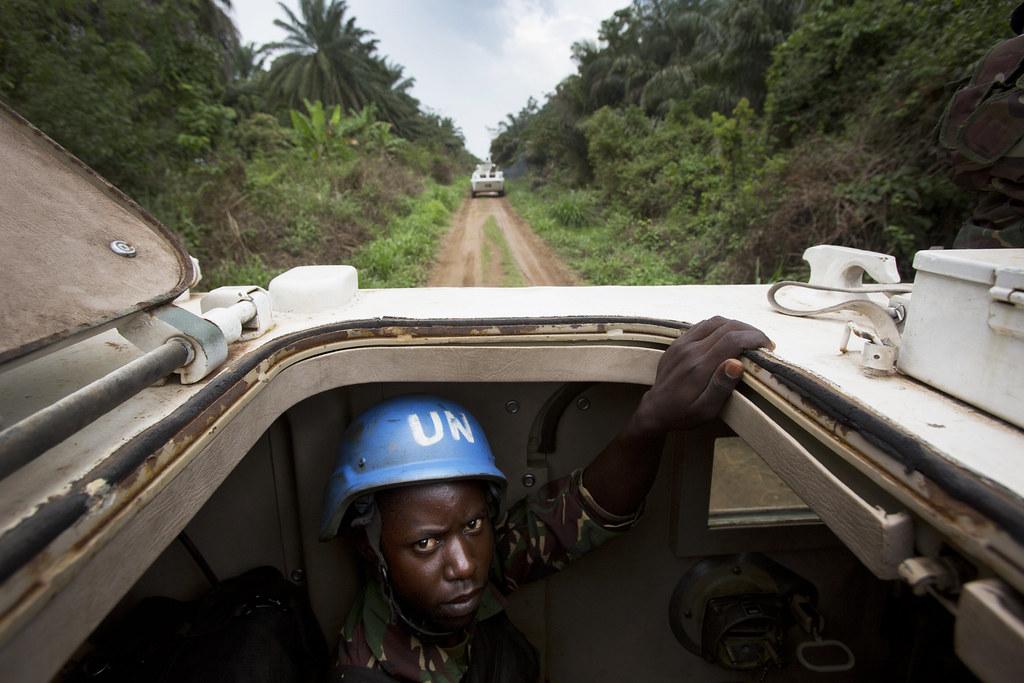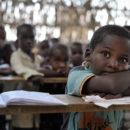The eastern DRC’s most active rebel group just got a bit more dangerous

Is the ADF rebel group now a province of so-called Islamic State?

A UN mission against the ADF militia in the Beni region in March 2014. Credit: MONUSCO/Sylvain Liechti
On 16 April, the rebel group known as the Allied Democratic Forces (ADF) carried out an attack on an army base in the north-east of the Democratic Republic of Congo (DRC). Two days later, so-called Islamic State (IS) claimed responsibility.
Some evidence of links between the two groups had emerged in 2018, but this was IS’s first public acknowledgement of affiliation. Two weeks later, IS leader Abu Bakr al-Baghdadi was seen in a video receiving reports on global franchises including a “Central Africa Province”. Since then, IS has claimed responsibility for at least 15 further incidents in the DRC. This includes the abduction of 15 civilians near Oicha on 23 May and an attack on the Congolese army near Goma on 3 June in which it said 25 soldiers were injured or killed.
If the rebel ADF group has been recognised as an IS Province or Wilayat, beyond that little is known about the true nature of their relationship.
In November 2018, the Congo Research Group reported that Waleed Ahmed Zein, a Kenyan national who had been arrested for alleged ties to IS months earlier, had facilitated the transfer of funds from IS command centre to the ADF. It is unclear, however, how much money was moved, what it was used for, and whether further financial support has followed. As early as 2014, UN experts noted the presence of Arabic-speaking instructors and fighters among the ADF. But several UN reports since then, most recently in June 2018, were unable to reliably establish any relations between the Congolese rebels and international Islamist networks.
How the ADF and IS came together
The ADF has always been a highly fluid organisation. The group was formed in 1995 from an ideologically diverse alliance between the Ugandan Freedom Fighters Movement, a Sudanese-backed militia fighting against government oppression of Muslims and for domination of Uganda’s Islamic community, and Rewenzuru insurgents from western Uganda. Their shared goal was to overthrow Uganda’s President Yoweri Museveni.
At the time, Mobutu Sese Seko’s regime was coming to an end in then Zaire, making the country’s north-east a convenient base from which to launch attacks. Over time, the group deepened its alliances with Congolese rebels and began to recruit new fighters locally. Its initial religious and political objectives gave way to straightforward predation.
This emphasis shifted back again from the late-2000s when the UN mission in the DRC (MONUSCO) and Congolese army clamped down on the ADF, having identified it as a key source of instability. Debilitating military losses, particularly around 2014 when the group’s then leader Jamil Mukulu was forced to flee, led the ADF to turn back to its radical Islamist origins in an effort to replenish and unite its decimated ranks.
It may have been around this time that it began reaching out to international Islamist networks. In an apparent overture to them, ADF combatants released several videos in 2016 and 2017 that suggested the group had adopted the Arabic name Madinat Tawheed wal Muwahideen (“City of Monotheism and Monotheists”). They featured a flag similar to those used by IS and Boko Haram.
As religious indoctrination increased so did the intensity of the group’s violence. Between 2014 and 2018, nearly 2,000 people were killed in attacks attributed to the ADF. This surge in violence coincides with its possible establishment of ties with Islamist groups, but its increased recruitment from neighbouring countries, looting of weapons in raids on army installations, and the restoration of local support networks were likely more important factors in its resurgence. If IS’s other African affiliates are any indication, there may well be limited exchange of funds and fighters. The ADF’s fortunes have been and will continue to be primarily shaped by local dynamics.
Nonetheless, it would be a mistake to assume that the ADF’s apparent new status as an IS “province” will make no difference to the regional security landscape. Even without substantial material exchange, both ADF and IS stand to gain from the association. Since the implosion of its “caliphate” in Syria and Iraq, IS has been at pains to stay relevant. The establishment of new franchises in Africa and Asia has become critical to keeping the organisation’s “remain and expand” narrative alive.
An increased threat?
It is noteworthy that, in contrast to Islamic State in the Greater Sahara and the Islamic State West Africa Province, the ADF’s recognition as an IS affiliate was not preceded by a publicised pledge of allegiance from the ADF’s leadership. There has also not been an official response since.
The silence of the group’s current leader Musa Baluku and other high-ranking figures makes it difficult to assess whether the affiliation was initiated from the top and whether it extends to the ADF in its entirety or only a sub-faction. However, at the very least, the leadership has tolerated the dissemination of videos in which individual members swear loyalty to IS on social media since at least 2016, presumably in the expectation that this would raise the organisation’s profile among potential recruits.
Under Baluku’s leadership, the ADF has also emulated IS propaganda methods, reaching out to would-be fighters from across the Great Lakes area in various languages. This approach has already borne fruit. Reports from defectors and propaganda material suggest that there is growing presence of militants from neighbouring countries among the ADF’s ranks.
UN experts estimate the current number of combatants at 400-450, including a number of Tanzanians, Burundians and Rwandans. This is still far below its pre-2014 membership but marks a significant resurgence from a low of just 30-70 armed members after the Congolese army and MONUSCO launched operation Sukola I. Promotion to an IS affiliate, regardless of whether it was solicited or not, is certain to give the group’s efforts to recruit new fighters a further boost.
For now, the ADF remains contained to a relatively small territory in Nord Kivu province, but that may not be the case for much longer. In December 2018, the US temporarily shut its embassy in Kinshasa in response to an IS-related terrorist threat. It later emerged that the closure was linked to the arrest of Tanzanian ADF militants the previous month. Should there have been credible plans for an attack in Kinshasa, some 1,600km west of the group’s traditional operating area, this would indicate a whole new threat level.
The ADF was not eliminated in 2014 largely due to the lack of a sustained commitment from the Congolese government and its deterioration of relations with MONUSCO. Newly-elected President Felix Tshisekedi has urged swift, internationally-backed action against the growing terrorist threat posed by the ADF. Whether he has the power to turn his words into deeds is uncertain, though, given former president Joseph Kabila’s continued control of the DRC’s security forces. As increasing numbers of foreign soldiers join the ADF’s ranks, it may only be a matter of time until they take the insurgency to their home countries.





